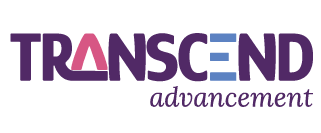Inclusive Fundraising
Making Philanthropy Accessible to All
Fundraising should be for everyone. However, traditional fundraising models often create barriers that exclude potential donors based on financial means, background, or access to engagement opportunities. Inclusive fundraising ensures that all supporters—regardless of income, race, ability, or geography—have equitable opportunities to give, participate, and feel valued.
Why Inclusive Fundraising Matters
Nonprofits thrive on diverse communities of supporters, but if your fundraising approach isn’t inclusive, you may be unintentionally limiting your donor base. Inclusive fundraising:
Expands Your Reach – Engaging diverse donors creates a more sustainable and resilient funding model.
Reflects Your Mission – If your nonprofit serves a diverse community, your fundraising efforts should mirror that diversity.
Encourages Participation at Every Level – Not every donor can give major gifts, but everyone should have the opportunity to contribute in meaningful ways.
By making philanthropy accessible, you ensure that more people feel invested in your mission.
How to Make Fundraising More Inclusive
1. Offer a Variety of Giving Options
Not all donors can give a large one-time gift, but many would contribute if they had flexible giving options. Consider:
Monthly giving programs that allow donors to spread out their contributions.
Peer-to-peer fundraising that empowers supporters to raise money from their networks.
Text-to-give and mobile-friendly options for easy, accessible donations.
In-kind giving or volunteer-based contributions for those who want to support in other ways.
When you offer multiple ways to give, more people can participate.
2. Make Your Fundraising Communications Accessible
Your fundraising appeals, website, and social media should be welcoming and easy to navigate. Accessibility best practices include:
Providing content in multiple languages if your audience is multilingual.
Using clear, simple language that avoids jargon or academic-sounding fundraising terms.
Ensuring your website and donation forms are screen-reader friendly for visually impaired users.
Including captions and transcripts for videos to accommodate the Deaf and hard-of-hearing community.
These small changes can make a huge difference in ensuring that all supporters can engage with your mission.
3. Diversify Donor Engagement and Recognition
Many fundraising strategies prioritize major donors, but a truly inclusive approach ensures that all supporters feel valued, regardless of gift size. Ways to do this include:
Recognizing all contributions, not just major gifts. Highlight small donors, volunteers, and in-kind donors.
Creating donor stories that feature diverse supporters, showing different ways people engage with your cause.
Hosting events with accessible pricing, such as sliding-scale tickets, pay-what-you-can models, or free community gatherings.
Every donor wants to feel appreciated, and recognition efforts should reflect the full spectrum of supporters.
4. Build Relationships with Underrepresented Communities
Many organizations rely on traditional fundraising networks, but inclusive fundraising means expanding beyond your usual circles. Consider:
Partnering with BIPOC-led organizations to connect with new donors.
Engaging faith-based communities, small businesses, and grassroots leaders.
Attending cultural events to build relationships before making an ask.
Effective fundraising isn’t just about asking for money—it’s about investing in relationships that create long-term, trust-based support.
Take the Next Steps Toward Inclusive Fundraising
At TRANSCEND Advancement, we help nonprofits build inclusive fundraising strategies that engage diverse donor communities. Whether you need an accessibility audit, donor outreach strategies, or tailored training, we’re here to help you make philanthropy accessible for all. Let’s work together to expand your fundraising reach and build a more inclusive donor community.
